How Agents Can Recreate the Marketing Team
From team to toolkit: marketing roles reimagined with GenAI
Modern marketing teams are made up of specialists. A manager drives campaigns, a copywriter refines the brand voice, an SEO lead optimizes keywords, and an analyst crunches metrics. Replicating this breadth for an individual used to be impossible. With GenAI and agentic workflows, its now possible for one person to manage an entire team of independent agents for these tasks, mimicking all of these roles, turning what was once a department into a set of digital colleagues.
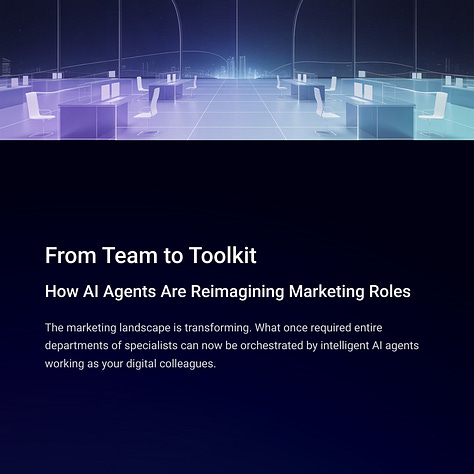
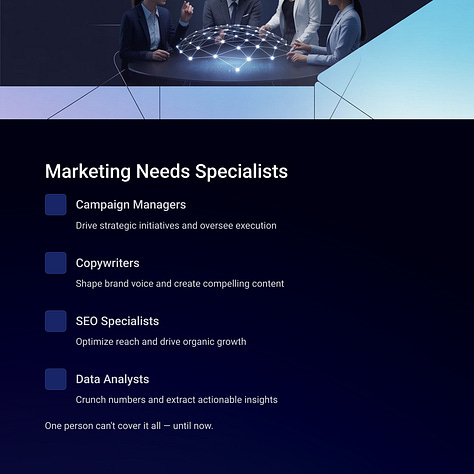
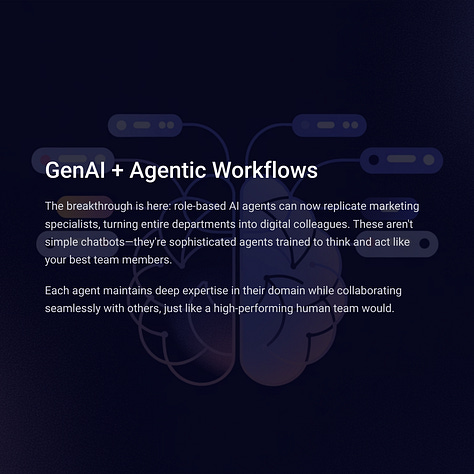
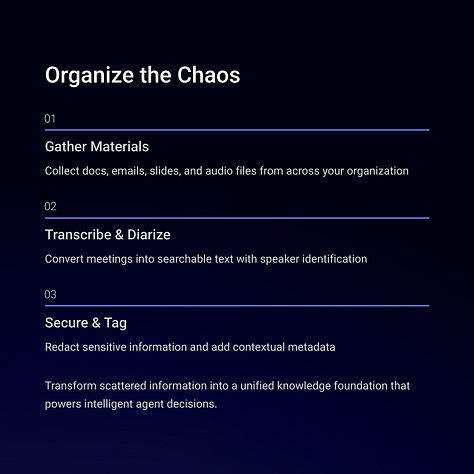
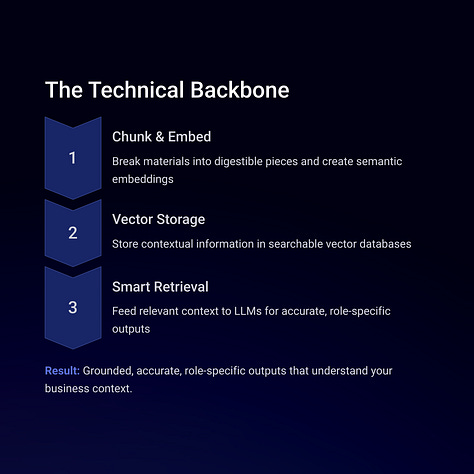
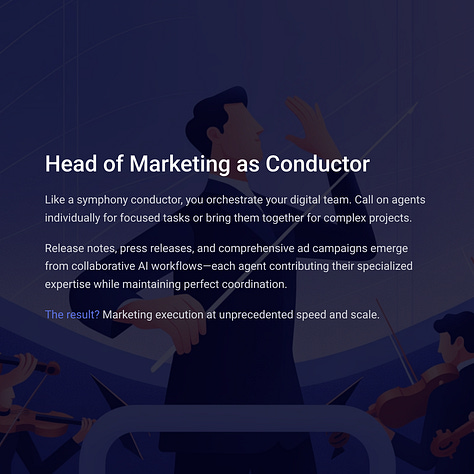
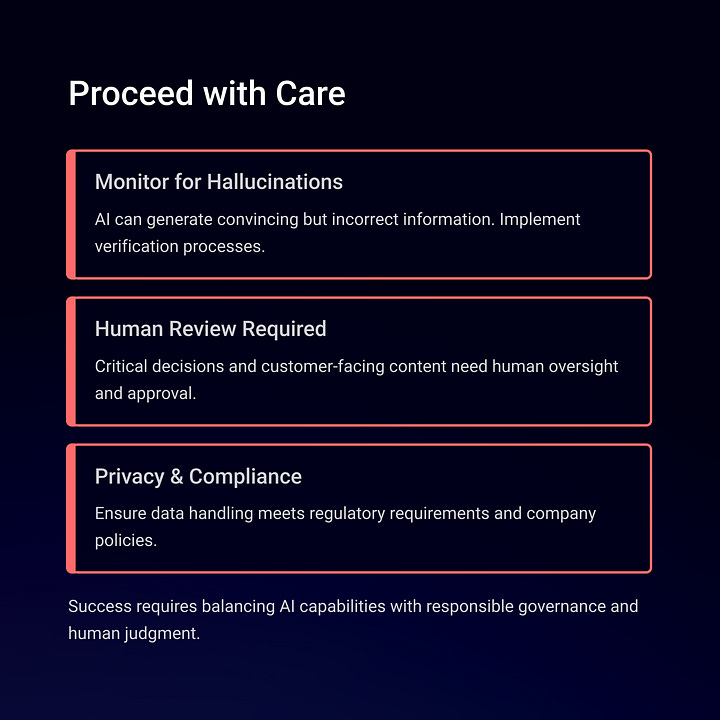
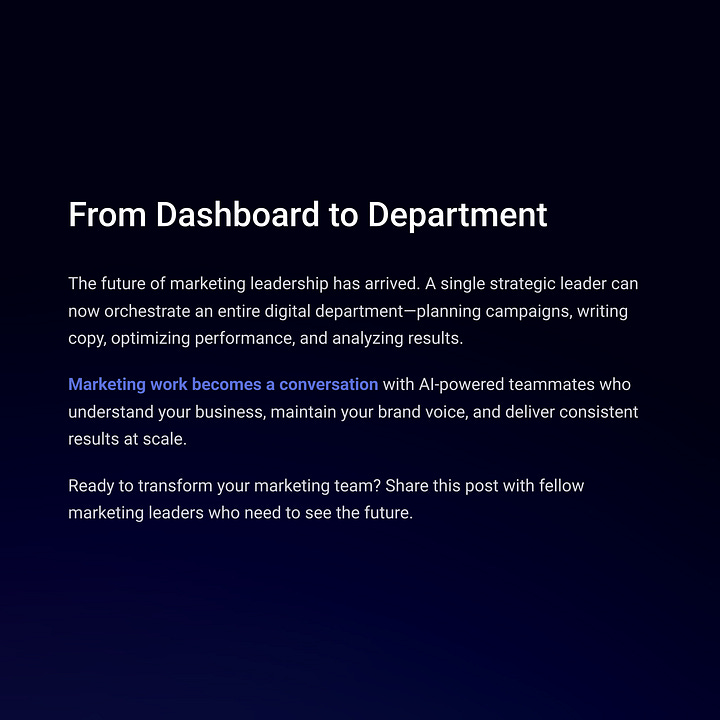
The challenge
Marketing outputs are immense: campaign briefs, meeting notes, analytics dashboards, creative assets, and keyword spreadsheets. The difficulty is not a lack of data but organizing it in a way that lets an AI pipeline understand and value the workflows within each role. Over the past year, I have built many agents to replicate actual personnel, the first hurdle was deciding how to collect and prepare the source material. Without that foundation, no agent could act convincingly as “the SEO Manager” or “the Content Writer.”
The engineering blueprint
This process is more akin to building infrastructure than writing requirements. First, gather every document, presentation, email, and audio recording produced by the individuals on the marketing team. Meeting audio can transcribed with diarization so the system knows who said what. Sensitive data can be redacted or pseudonymized. All materials can be split into chunks, annotated with metadata such as campaign IDs or channels, and embedded into a vector database. This retrieval layer is the knowledge base that will ground every agent’s response.
On top of the index sits a retrieval-augmented generation layer. A query like “update our keyword campaign” retrieves the most relevant search strategy documents, past Adwords performance, and any meeting notes about budget. That context is then fed into the large language model. The model itself may be fine-tuned for style, but the bulk of the accuracy comes from retrieval rather than training.
Role-based personas
With the pipeline in place, the real design can begin. Each agent can be given a persona that mirrors a real marketing role. The Marketing Manager agent specializes in campaign planning and cross-functional coordination. The SEO Manager agent filters queries toward search strategy documents and keyword tables. A Copywriter agent can draw from brand guidelines and previous releases. These personas are not just prompt templates; they are retrieval filters, access controls, and style guides wrapped together.
The head of marketing becomes an orchestrator. They can call on each role separately or combine them for joint work. Ask the Copywriter to draft release notes for a new feature. Call on the SEO Manager to update the Adwords keyword set. Or have them collaborate: the Copywriter and SEO Manager can together generate release notes and press releases aligned to the same campaign while ensuring search visibility. The system produces not just text but citations back to the source material, allowing a human to verify accuracy before publishing.
Working together like a team
In practice, this is very different from generic chatbots. The agents exhibit specialization. The analyst agent speaks in numbers and charts, drawing from performance reports. The creative agent adopts a brand voice and produces A/B headline options, maybe even creative elements if you elect to. When they collaborate, their outputs are merged in a way that resembles the interplay of an actual human team. The result is not perfect mimicry, but a workflow assistant that saves hours and raises the quality floor.
Risks and responsibilities
There are huge caveats. Agents must be monitored to prevent hallucinated metrics or off-brand copy. This will happen, prepare for it. Privacy and compliance reviews are mandatory before ingesting any internal data. Human review remains essential, particularly when outputs will face customers or regulators. But compared to the overhead of hiring or coordinating a full department, the efficiency gains are substantial.
The future head of marketing
For small companies, this approach collapses the gap between ambition and resources. A single leader can act as if they have a team of specialists on call. For larger companies, role-based agents can augment staff, handling routine drafts and analyses so humans focus on strategy and creativity. Either way, the direction is clear: marketing work is becoming a conversation between leaders and their digital counterparts.
What once required a department can now be orchestrated from a single dashboard. The head of marketing can call on their AI colleagues: the Manager, the SEO lead, the Copywriter, the Analyst and move campaigns from idea to execution in record time. It is not the end of marketing jobs, but a re-imagining of how expertise is accessed. Teams may shrink or shift, but the structure of roles remains, only this time they are powered by silicon rather than salaries.
TLDR
Modern marketing teams can be replicated with AI agents that mimic roles like copywriter, SEO manager, and analyst. By ingesting documents, transcripts, and campaign data into a retrieval-augmented system, each agent is grounded in real workflows and outputs. This allows a single head of marketing to orchestrate an entire digital team, accelerating campaigns while maintaining oversight and compliance.

